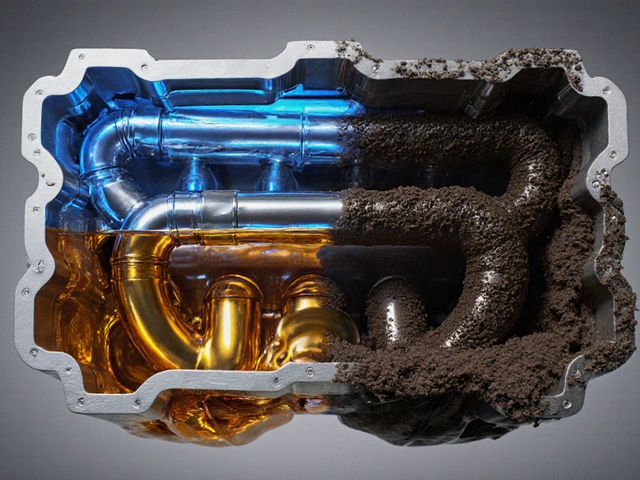Ever swapped your spark plugs and wondered if your car would suddenly run like new? Here’s the deal—your spark plugs do way more than people think. They light up the fuel in your engine, and if they’re not working right, your ride can feel sluggish, rough, or hard to start. Fresh plugs usually mean quicker starts, better gas mileage, and smoother acceleration.
Don’t expect any wild miracles, though. If your old plugs were completely toast, the change can feel night and day. But if they were just slightly worn, the improvements can be subtle. Still, you’re protecting your engine from future issues and saving money at the pump over time. Giving your car new spark plugs is a low-cost fix that often makes a bigger difference than folks expect.
- Why Spark Plugs Matter
- How Old Plugs Affect Your Ride
- What You Notice After Changing Spark Plugs
- Signs It’s Time for New Plugs
- Simple Tips for Keeping Your Engine Happy
Why Spark Plugs Matter
Spark plugs play a huge role in how your engine runs, even though they’re small and cheap. Their main job? They create the spark that lights the mix of fuel and air in your car’s cylinders. If that spark isn’t strong or reliable, your engine doesn’t burn fuel efficiently. That means wasted gas, rough running, or even misfires.
Think of spark plugs as the matchsticks of your engine. Without a good spark, you’ll notice slower starts, poor throttle response, and sometimes random jerks while driving. Over time, plugs get dirty from carbon deposits or just wear out, especially if you’re using fuel that’s not so great or taking lots of short trips where the engine doesn’t get hot.
Here’s why keeping your spark plugs in shape really matters:
- They help your car start smoothly every time, even in cold weather.
- A good set means your engine burns fuel more completely, which translates to better fuel economy.
- Healthy spark plugs lower emissions, which is good for your wallet and the environment.
- Most manufacturers suggest changing them between 30,000 and 100,000 miles, depending on the type.
Bottom line: spark plugs might look simple, but swapping them out at the right time keeps your car running better and longer. Skipping this basic part of maintenance can turn a simple job into a pricey repair down the road.
How Old Plugs Affect Your Ride
If your car feels like it’s dragging its feet or you notice it chugs a bit at stoplights, don’t blame your luck—old spark plugs might be behind it. When plugs start to wear out, they don’t make as strong of a spark. That weak spark means your engine isn’t firing like it should, which messes with almost everything about how your car drives.
Here’s what really happens with old plugs:
- Harder starts, especially on cold mornings
- Random engine misfires or a jerky feeling on acceleration
- Poorer fuel economy—worn plugs can cost you up to 30% extra at the gas pump
- Sluggish acceleration and rough idling
- That annoying “check engine” light popping up
This isn’t just a pain; it can turn into even bigger headaches, like damaging your catalytic converter or other engine parts. The spark plug change is small, but the upside is big: reliable starts, smoother drives, and extra miles per gallon. A 2023 survey by AAA found that nearly 20% of drivers who reported poor mileage later discovered their plugs were overdue for a swap.
| Problem | How Old Plugs Make It Worse |
|---|---|
| Engine Misfire | Sparks are weak or inconsistent, so some fuel doesn’t burn right |
| Rough Idle | Old plugs can’t keep the combustion steady |
| Reduced Power | Engine has to work harder, so it responds slower |
| Poor Fuel Economy | Unburned fuel means you’re wasting gas |
So, if your car feels off and those plugs haven’t been changed in a while, that’s your low-hanging fruit. Swap them out and it can save you a bunch of hassle down the road.

What You Notice After Changing Spark Plugs
Pop in new spark plugs, and your car can surprise you. The first thing most folks notice is how much smoother the engine runs—no more shaky idle or weird hiccups when you tap the gas. Starting up the engine is quicker and feels effortless, especially in the morning. If your old plugs were in bad shape, these changes are basically instant.
Many people report better gas mileage within the first week. This happens because when the spark plug change is done right, the engine burns fuel more efficiently. It might not be a massive jump, but you could see a 1-2 MPG improvement, which adds up over months. Plus, smoother acceleration means you get up to speed without that lagging or jerking that worn plugs cause.
Here’s a quick look at the kind of changes you might notice after swapping out old plugs:
- Faster engine starts – The car fires up right away, even on cold mornings.
- Steadier idle – No more rattling or random RPM drops at stoplights.
- Quieter engine noise – Some of the roughness and extra noise fades out.
- Better throttle response – Hit the gas and the power actually arrives like it should.
- Fewer misfires – That annoying stumble or hesitation when you accelerate is gone.
Here’s a quick breakdown of potential improvements with new spark plugs:
| Before Change | After Change |
|---|---|
| Hard to start, especially when cold | Starts quickly in any weather |
| Rough or uneven idle | Smooth, steady idle |
| Poor fuel economy (down 1-3 MPG) | Improved MPG by 1-2 points |
| Sluggish acceleration, misfires | Responsive, smoother power delivery |
| Check Engine Light for misfire codes | Light goes out after a few drives (if plugs were the cause) |
If you don’t notice much difference, maybe your old plugs weren’t too far gone or there’s another issue in the mix. But most of the time, a spark plug swap is an easy win that you feel every time you turn the key.
Signs It’s Time for New Plugs
So, how do you know it’s time to change your spark plugs? There are some dead giveaways you shouldn’t ignore. If you start noticing your car taking longer to start, or it’s cranking like it doesn’t want to wake up, that’s a common one. Rough idling is another classic sign—if your engine bounces or vibrates while waiting at a light, put spark plugs on your checklist.
You might also see your fuel economy take a dive. Bad plugs cause your engine to work harder and burn more gas. Another red flag: your check engine light pops up, sometimes for a ‘misfire’ code. Oh, and if acceleration feels jumpy or your car hesitates when you hit the gas, those plugs could be to blame.
- Hard starting, or the engine taking a while to crank
- Rough or shaky idling
- Poor engine performance, like sluggish acceleration or misfiring
- Noticeable drop in fuel economy
- Check engine light turns on (often P0300 to P0312 codes for misfires)
Here’s some data that shows how dirty spark plugs mess with your car’s performance:
| Condition | Effect on Car |
|---|---|
| Worn spark plug gap | Can cause up to 30% increase in misfires |
| Fouled spark plugs | May drop fuel economy by 15-20% |
| Irregular sparks | Force the engine to run rough or stall |
| Delayed maintenance | Reduces overall engine lifespan |
A quick tip: most modern cars need new plugs every 60,000 to 100,000 miles, but always check your owner’s manual for the exact interval. If you’re racking up short trips or spending a lot of time in stop-and-go traffic, you might need to swap them out even sooner.

Simple Tips for Keeping Your Engine Happy
So you’ve swapped out your spark plugs. Now what? If you want your engine to stay happy (and avoid surprise repair bills), you’ll need more than just fresh plugs. The good news: it’s not rocket science. Here are some straightforward moves to keep things running smooth:
- Check your spark plugs every 30,000 miles or so, or as your manual suggests. Some fancy iridium plugs last even longer, but don’t gamble—worn plugs hurt performance and can even damage your engine over time.
- Stick to your car’s oil change schedule. Dirty oil clogs stuff up and messes with spark plug performance.
- Don’t ignore the air filter. Change it when it’s dirty. A clogged filter limits airflow, making the firing process tougher for your plugs.
- Pay attention to your fuel. Using the right type (and not running on empty) keeps your plugs and engine healthy.
- Listen for rough idling, knocking, or sluggish starts. Those signals mean something’s off—don’t just turn up the radio and ignore them.
If you like numbers, here’s why this routine care matters. Old spark plugs can boost fuel use by up to 30%, just because they’re making your engine work harder to fire up, according to the U.S. Department of Energy. Check out this quick table comparing the impact:
| Issue | Potential Effect |
|---|---|
| Worn-out Spark Plugs | Up to 30% lower fuel economy |
| Dirty Air Filter | Reduced horsepower and rough running |
| Missed Oil Change | Increased engine wear (even total failure over time) |
None of this is tricky, but skipping regular checkups is where most folks get burned. Staying on top of these basics means you’ll get more miles, fewer surprises, and your engine will thank you every time you start up.




